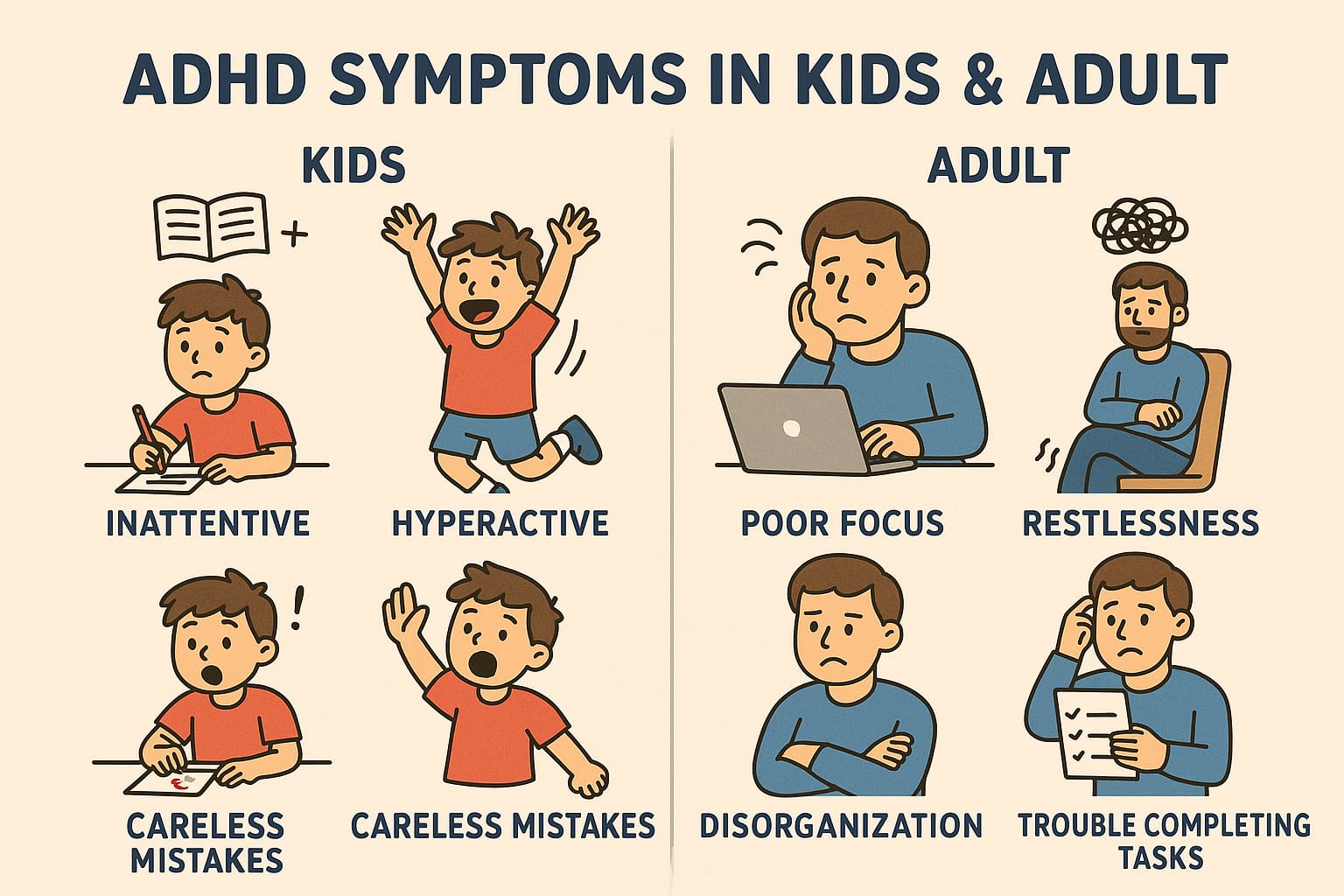ADHD diagnosis online offers a convenient and accessible way for individuals to assess their symptoms without the need for in-person visits. Many online platforms provide screening tools based on clinical guidelines that can help identify signs of ADHD quickly and confidentially. This option allows people to begin understanding their condition and decide if a comprehensive evaluation or treatment plan is necessary.
These digital assessments are often designed to be straightforward and user-friendly, with some offering immediate feedback or the opportunity to connect with healthcare professionals for further steps. Online ADHD services may also include personalized treatment plans, making it easier for people to access support tailored to their needs.
By removing barriers like travel and wait times, online ADHD diagnosis is becoming a practical choice for many seeking clarity about their symptoms. It’s a step toward managing focus and attention challenges with evidence-based approaches from trusted providers.
Understanding Online ADHD Diagnosis
Online ADHD diagnosis involves using digital tools and virtual consultations to assess symptoms and determine if an individual meets clinical criteria for ADHD. This process differs from traditional in-person evaluations but aims to provide accessible, evidence-based assessments. Factors such as convenience, accuracy, and limitations come into play.
What Is an Online ADHD Diagnosis?
An online ADHD diagnosis typically combines standardized questionnaires, clinical interviews, and sometimes cognitive or attention tests conducted through secure platforms. Licensed healthcare professionals review submitted information and may interact with the patient via video calls or chats. This approach follows established diagnostic criteria, often based on the DSM-5.
The evaluation covers symptom history, functional impairment, and possible coexisting conditions. Some providers offer tailored follow-up plans, including medication recommendations or behavioral strategies. The entire process often completes faster than conventional methods, sometimes within days.
Benefits of Remote Assessment
Remote ADHD assessments increase accessibility, allowing people in remote or underserved areas to get evaluated without travel. The process saves time and fits better into busy schedules by eliminating waiting rooms and commute.
It affords privacy and comfort, which may improve honesty and thoroughness in responses. Many platforms use validated, evidence-based tools ensuring the clinical rigor of the evaluation. Additionally, rapid feedback and treatment planning help users begin managing symptoms sooner.
Limitations and Considerations
Online ADHD diagnosis can sometimes miss nuances an in-person assessment might catch, especially with complex cases or coexisting mental health issues. It depends heavily on self-reporting, which might be influenced by misunderstanding symptoms or external factors like stress or sleep disorders.
Healthcare providers may require additional in-person testing to confirm findings or rule out other conditions. Not all online services meet clinical standards, so verifying provider credentials and protocols is essential before proceeding. Users should consider these factors when choosing online assessment.
How to Get an ADHD Diagnosis Online
An online ADHD diagnosis involves selecting a trusted provider, completing a structured virtual assessment, and understanding what the evaluation entails. These steps ensure accuracy and personalized care through digital platforms.
Choosing a Reputable Provider
Selecting a qualified and credible provider is essential for a reliable ADHD diagnosis online. Look for clinics that employ licensed healthcare professionals such as Nurse Practitioners, psychiatrists, or psychologists with experience in ADHD.
Check if the provider offers evidence-based assessments and clear treatment plans, including medication and accommodations. Availability in your location is critical, as some services are limited to certain provinces or regions.
Reviews, professional certifications, and transparency about the assessment process help verify legitimacy. Providers like Beyond ADHD, Finding Focus, and Maple are recognized for combining clinical expertise with online accessibility.
Steps in the Virtual Assessment Process
Typically, the process starts with completing standardized screening tools, such as the ASRS (Adult ADHD Self-Report Scale), which can take just a few minutes. This preliminary step helps providers determine eligibility for a full diagnostic assessment.
Next, patients schedule a video consultation where the clinician reviews medical history, symptom patterns, and functional impairments. Some assessments may require forms or lab tests before starting treatment.
The entire process usually takes days to weeks, depending on the provider. After evaluation, a treatment plan is offered, often including medication, therapy recommendations, and accommodations for work or education.
What to Expect During the Evaluation
During the evaluation, the clinician asks detailed questions about symptoms experienced over the past six months or longer. They assess attention, impulsivity, hyperactivity, and how these affect daily functioning.
Expect to discuss personal, educational, and work history to identify patterns consistent with ADHD. The provider may also explore coexisting conditions such as anxiety or depression.
Virtual visits allow for convenience but require a quiet, private space for clear communication. If diagnosed, the clinician will explain options for medication, behavioral strategies, and academic or workplace support tailored to individual needs.



Leave a Reply